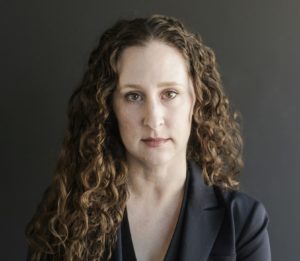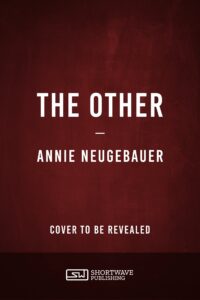Originally posted on December 17, 2010 at 3:15 PM
When I say “vampire,” you most likely think Twilight, Dracula, and maybe Anne Rice. But the truth is, there are dozens more authors that have made vampires what they are today. Let’s make it simple. I’ve compiled a timeline of almost 300 years of what I see to be the most genre-changing (and genre-creating) literature about vampires. (And yes, I have read almost all of these.) I’ll explain specifics below.
• 1748 “The Vampire,” poem by Heinrich August Ossenfelder
• 1773 “Die Braut von Corinth” (“The Bride of Corinth”;), poem by Johann Wolfgang von Goethe
• 1800 “Christabel,” unfinished poem by Samuel Taylor Coleridge
• 1813 “The Giaour,” poem by Lord Byron
• 1819 “The Vampyre,” short story originally attributed to Lord Byron but actually by John Polidori
• 1845 to 1847 Varney the Vampire, vampire mini-series originally published in the Penny Dreadfuls., attributed to James Malcolm Rymer or Thomas Preskett Prest
• 1847 Wuthering Heights, novel by Emily Bronte
• 1872 Carmilla, novella by Joseph Thomas Sheridan Le Fanu
• 1897 Dracula, famous novel by Bram Stoker
• 1954 I am Legend, novel by Richard Matheson
• 1976 The Vampire Chronicles series (Interview with the Vampire) by Anne Rice
• 1978 Hôtel Transylvania novel by Chelsea Quinn Yarbro
• 1993 Anita Blake series (Guilty Pleasures, The Laughing Corpse) by Laurell K. Hamilton’s
• 2001 Sookie Stackhouse/Southern Vampire series (Dead Until Dark) by Charlaine Harris
• 2004 Rachel Morgan series (Dead Witch Walking) by Kim Harrison
• 2005 Twilight series by Stephenie Meyer
As you can see, vampire frenzy started up in western Europe in the mid-1700’s. Myths and superstitions from other cultures suddenly took the forefront in places like England and Germany, and believe it or not, there was a real historic vampire-crisis – not unlike the witch trials around 1600. People became so paranoid they actually dug up dead family members and staked them. Crazy much?
Anywho, this fear played well into creative minds, and it wasn’t long before poets and short-storyists were churning out the frights. Lord Byron, a popular and flamboyant figure of the early 1800’s, wrote a poem that mentioned vampires, which was quickly capitalized upon by his physician with a short story titled, “The Vampyre.” Byron was something like a modern-day movie star, and his paparazzi instantly recognized him as the central character in Polidori’s work. This was the beginning of vampires being sauve and sexy rather than disgusting and fearsome. In fact, many scholars use the term “Byronesque” to describe the archetype of the charming vampire (or any dark, brooding hero with destructive tendencies, a la Jean-Claude or Edward Cullen).
Books took longer to spread, back then. As the popularity of “Byron’s” story grew, other artists once again capitalized on the opportunity: The Penny Dreadfuls – sort of a cheap periodical with slasher stories – began to put out a mini-series about vampires, and although not of the best quality (actually, they’re frightfully bad), they sold like gold. It is safe to say that “vampire” was a well-known term in England by 1845. Very well known.
Some of you may have noticed that I included Emily Bronte’s Wuthering Heights in the timeline. Although not a traditional vampire story, I would argue that it is indeed about vampires, and written by a woman who knew exactly what she was doing. It’s too in-depth of an argument to post here, but I also believe that Ms. Bronte most likely influenced the infamous Bram Stoker some fifty years later.
But alas, it is Stoker who remains cemented most permanently into this history of vampires. Like it or not, Dracula was the first novel-length work published in English that had a clearly-stated vampire character. It was not hugely successful at first, although very well-received. Critics praised it and readers loved it, but it did not gain the notoriety it has today until movie versions started coming out in the late 1900’s. And important to note here: the vampire, although a count in a gloomy castle, was the villain.
Vampires didn’t make waves again until Richard Matheson’s I am Legend came out in 1954. This is a hugely, hugely important book. It was the first popular piece to turn vampirism into a scientific phenomenon not based on magic. In Matheson’s novella, vampirism was a bacteria that spread as a disease. It was also one of the first disease-based apocalypse novels, and interestingly enough, it shaped the zombie genre significantly more than the vampire one… but I’ll talk more about that in the popularization of zombies.
Perhaps the reason the apocalypse concept didn’t take hold with vampires was due to the popularity of Anne Rice’s series just twenty years later. She went back more toward a Byronesque character, and her most notable contribution to the genre: the vampire was the protagonist. In Interview with a Vampire, Rice explores the deeper themes of vampirism through her vampires Louis & Lestat: loneliness, morality, mortality, humanity, etc. This series is no easy read; Rice takes us through history and philosophy and the darker side of human nature.
In the late 70’s and early 80’s, several individual vampire novels came out, but I find Hôtel Transylvania by Chelsea Quinn Yarbro worth mentioning specifically for one reason: it was a romance. Anne Rice might have had some romantic themes going, but Yarbro was the first to popularize the full-on vampire/human love story. You may thank her later.
Vampires remained in popular culture, in the background for the most part, until the 90’s rolled around with the awesomely fabulous Laurell K. Hamilton. Her Anita Blake series changed not just the vampire genre, but the shelves of bookstores to this day. She was the first, most successful author to put out such a genre-bending series (horror, fantasy, sci-fi, mystery, romance… what is it?) that readers couldn’t get enough of. She got rejected for her first novel in the series for YEARS before someone took a chance on her. And aren’t they happy now, counting their money in their mansion on the top of a mountain somewhere?
From then on, publishers started suddenly requesting “Hamilton-esque” vampire series, with werewolves, fairies, and monsters thrown in. In my opinion, this made possible the Sookie Stackhouses, Rachel Morgans, and yes, even the Bella Swans of today’s literary landscape.
Be sure to check out the other posts in the series:
Vampires and Zombies, part I: introduction
Vampires and Zombies, part III: the popularization of zombies (in western culture)
Share this:





I am very much enjoying reading these as pseudo research for my own vampire post I will eventually get around to posting. I just want to say that I would LOVE to see a post dedicated to your argument that Bronte influenced Stoker. I would turn into a ridiculous fan girl about that post. Just sayin.
Ha! Well that was part of my senior thesis, actually. The essay is very scholastic, so I don’t think it would make a very good blog post as-is. (And the Bronte –> Stoker thing is just a bit at the end, not the whole thesis or anything.) I do love that topic though. Maybe I’ll take a look at it someday and see if it can be bloggified. 😉
Oh! Please consider bloggifying it. I’d so love to read that. While I loved my thesis, I wish I could have done one on something like that. Was your degree in English in general or creative writing?
I’ll see what I can do! 🙂 My degree was just general English. My senior seminar course was on the Bronte sisters.